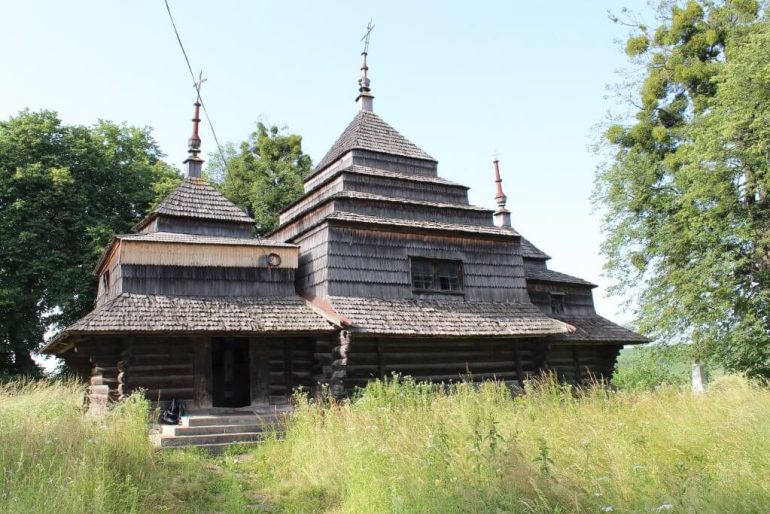The Institute of Wood Science and Wood Technology at the Faculty of Forestry and Wood of Mendel University (LDF MENDELU) is cooperating with colleagues in museums in Uzhgorod and Ivano-Frankivsk on the dating of wooden churches located in the Transcarpathian region of Ukraine. The researchers will use a compilation of a standard chronology for this area in order to more accurately determine when the churches were created and the age of the wood used, and the data will also serve paleoclimatic research.
The collaboration started back in 2020 when LDF MENDELU approached the museums in Uzhhorod and Ivano-Frankivsk with the intention of gathering samples from wooden churches in the Transcarpathian region of Ukraine. Over two trips, the researchers collected approximately 174 samples from 12, mostly all-oak, churches. The collected samples are from Zakarpattia Ukraine, especially in the area around the cities of Uzhhorod and Mukachevo.
Research leader Irena Sochová explained the process of selecting and collecting the samples: “Samples are taken using a Pressler incremental test. We select beams that retain as many rings as possible. These are both large beams and smaller beams with more narrow annual rings, thanks to which we get more information. At the same time, we try to choose beams where the so-called underbark ring is preserved, i.e. the last ring that the tree formed before it was cut down, or samples where the sapwood, i.e. the outer lighter part of the wood, is preserved.”
Thanks to these samples, dendrochronologists are able to date the church more precisely, to within a range of years if the sapwood is preserved or even to the season of the year if the underbark tree ring is preserved.
Sochová explained the steps of the dating process: “We then grind the sample in the institute’s laboratories and determine the width of the tree ring on the measuring table. This will create a so-called tree ring curve. We have a ring width assigned to each year. If we have a standard chronology and compare these curves with it, we can date the church accordingly. The curves fit into the standard chronology.”
The cooperation with LDF MENDELU provides the Ukrainian museologists the help they need to gather more precise data. The dates of churches stated in the preserved records or literature are often not quite accurate, according to Sochová: “It happens that they know the date when the church appeared in the given village, but it can be much older, because it was moved from another village, for example.”
The study also reveals that the age of the wood can differ from the one of the church itself. “In addition, they will now also receive information about the age of the wood used from us. This may be older than the church itself. We have actually noticed such a situation,” said Sochová.
The wooden churches in the area are connected historically to the former Czechoslovakia. “Following the annexation of Transcarpathian Ukraine to Czechoslovakia after the First World War, five wooden oak churches were transported from the Transcarpathian region to our territory and have remained here. We also took samples from them to compile a standard chronology, their exact dating and for comparison with churches in Ukraine,” added Sochová.
These churches are an important piece of Ukrainian history. Some of them are included in the UNESCO list of cultural monuments, many of which are part of the open-air exhibition of the Uzhhorod Museum.
Unfortunately, the process of collecting samples is no longer possible due to the ongoing war, though the collaboration between LDF MENDELU and Uzhhorod Museum continues.









